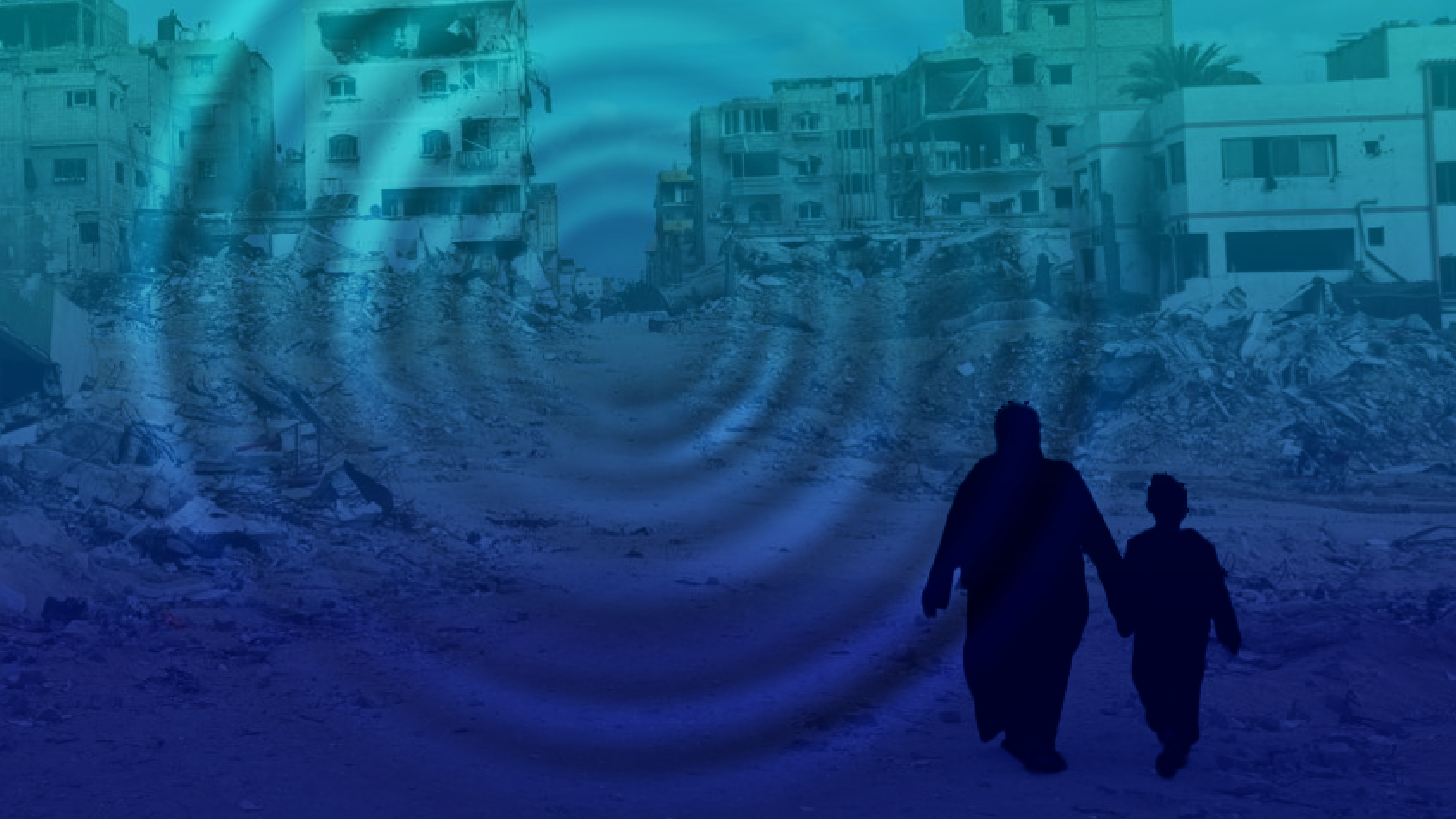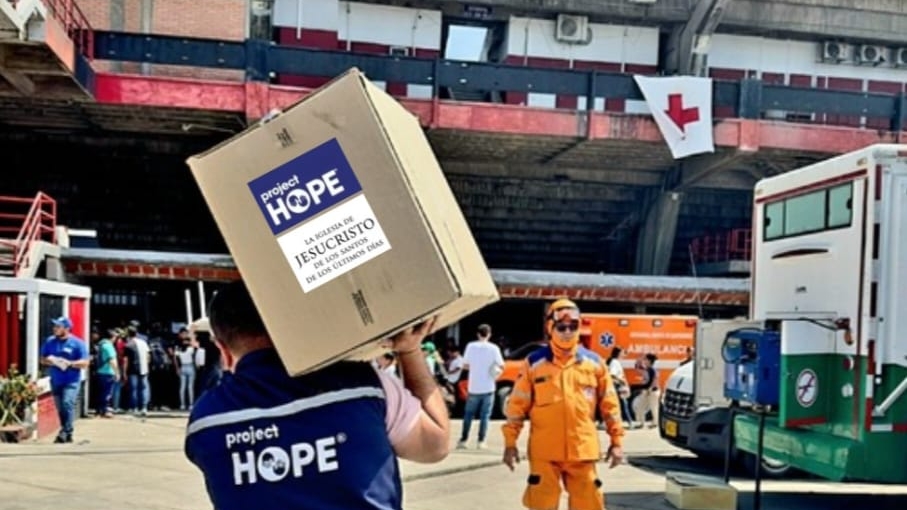Day in the Life: Ukraine
What is it like running a humanitarian response during a war? Meet four members of Project HOPE’s Ukraine team who take you through a typical day in one of the most volatile humanitarian crises on earth.
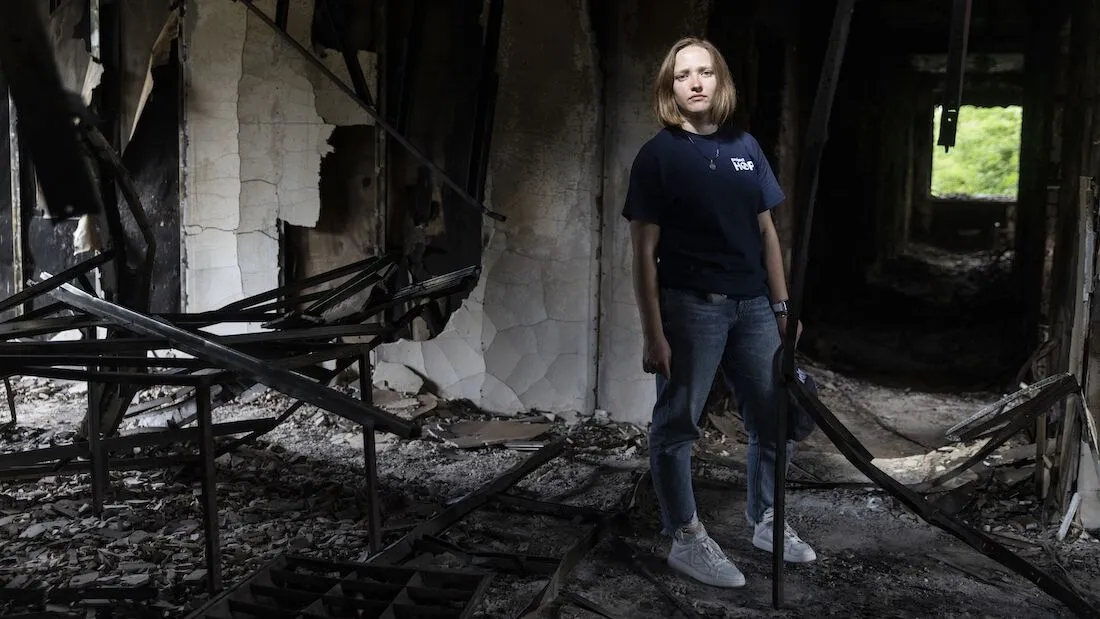
Security briefings, hospital visits, trauma trainings, and endless coordination calls.
Being a humanitarian during a war isn’t easy. But for the last six months, Project HOPE’s Ukraine team has done it anyway. Day in and day out, our team members across Ukraine have shown up during wartime to deliver urgent relief to their fellow Ukrainians.
Before the war, they had other dreams and careers: to work in the music industry, to pursue a career as an orthopedic surgeon, to simply live in peace. But on February 24, 2022, all of that changed. Driven by a love for their country and an urgent desire to help, they gave everything up to provide humanitarian relief when their country needed it most.
So what is a typical day like in Project HOPE’s Ukraine offices? Read on to meet four members of our Ukraine team and learn about the challenges—and rewards—of being a humanitarian in wartime.
Dr. Kateryna
Medical Coordinator
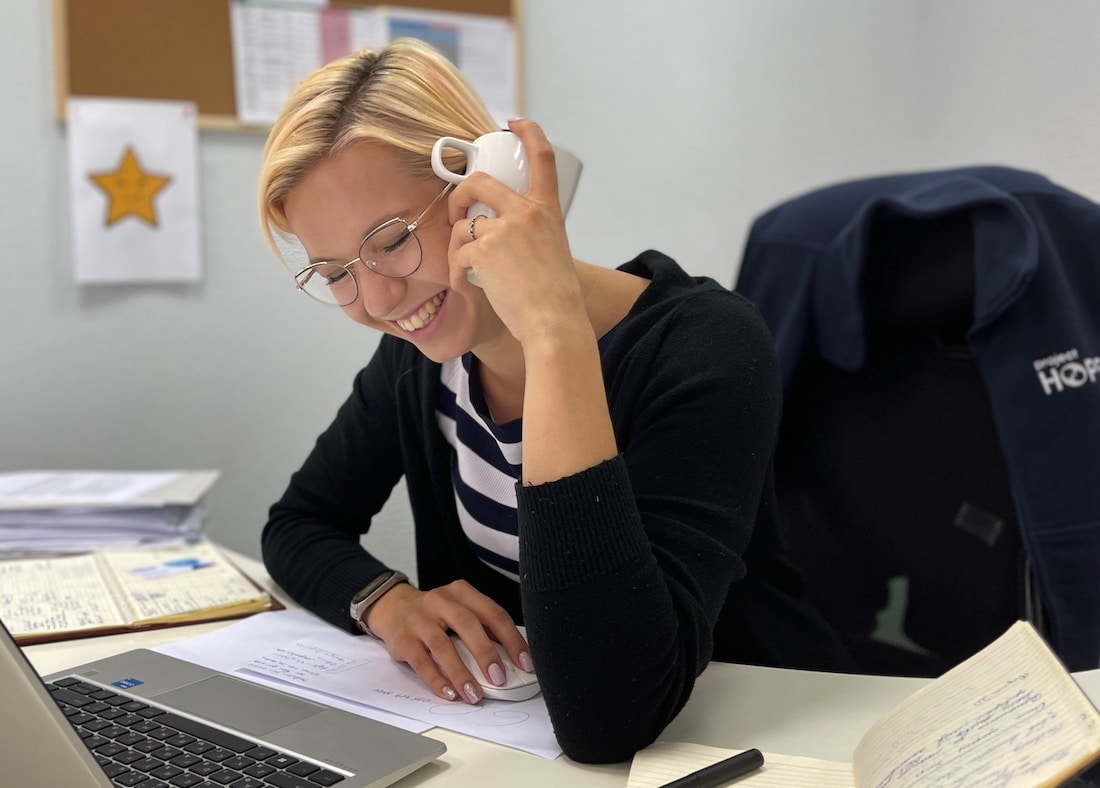
Before the war—after earning a challenging education at a medical university—I worked as an orthopedic surgeon in a small hospital in the Kyiv region and was more than dedicated to my job. After the Russian invasion, my work became more intense, mainly because we didn’t have enough provisions to fully cover treatment needs.
As the only English-speaking person in the hospital, I had many meetings with humanitarian and charitable organizations to get some support. One of the meetings was with Project HOPE’s medical director, Dr. Santosh Kumar. As we are both orthopedic surgeons, we have a lot in common, and he was very kind to invite me to be the medical coordinator.
Honestly, I had a lot of doubts: it wasn’t my specialty, it involved less surgical practice, and I feared losing my skills. But after a lot of thinking, I finally found the courage to accept the job offer. And I’ve never regretted that for a moment.
So now I’m the medical coordinator of Project HOPE’s Ukraine Response Team. Welcome to my typical day at work.
7 a.m. The first and maybe the hardest part of my day is getting up. I usually start my day with breakfast, a coffee, and trying to get to work on time.
9 a.m. Catching up with emails. After coming to the office, I make one more cup of coffee. I open my laptop and there are usually already 10 to 20 unread messages, so I’m trying to catch up with all tasks by putting them on my special task board.
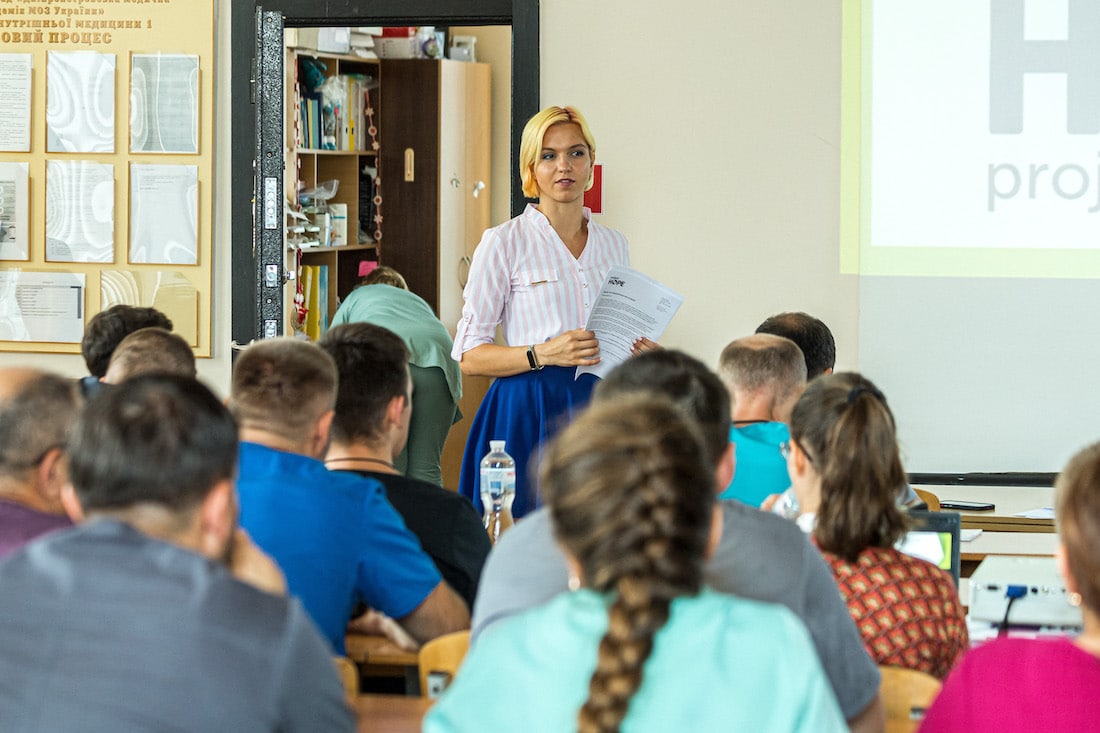
10 a.m. Next comes conducting training. We often have practical trainings organized by Project HOPE led by Dr. Richard Murphy from the U.S., so I have to gather everything and get to a pig farm to get some animal vessels needed for the training.
12 p.m. More correspondence. I already have more than 50 unread emails. I am tired of typing, but I got a lot of solutions, so I put some comments on the board.
2 p.m. Time to sort through gift-in-kind donations. First I have to make 24 calls to heads of hospitals about providing gift-in-kind donations and answer questions not specified in donation documents. There are lots of open bags of medical items while I try to find the missing info. I made a great mess at the office. But it doesn’t matter—I’m doing my job!
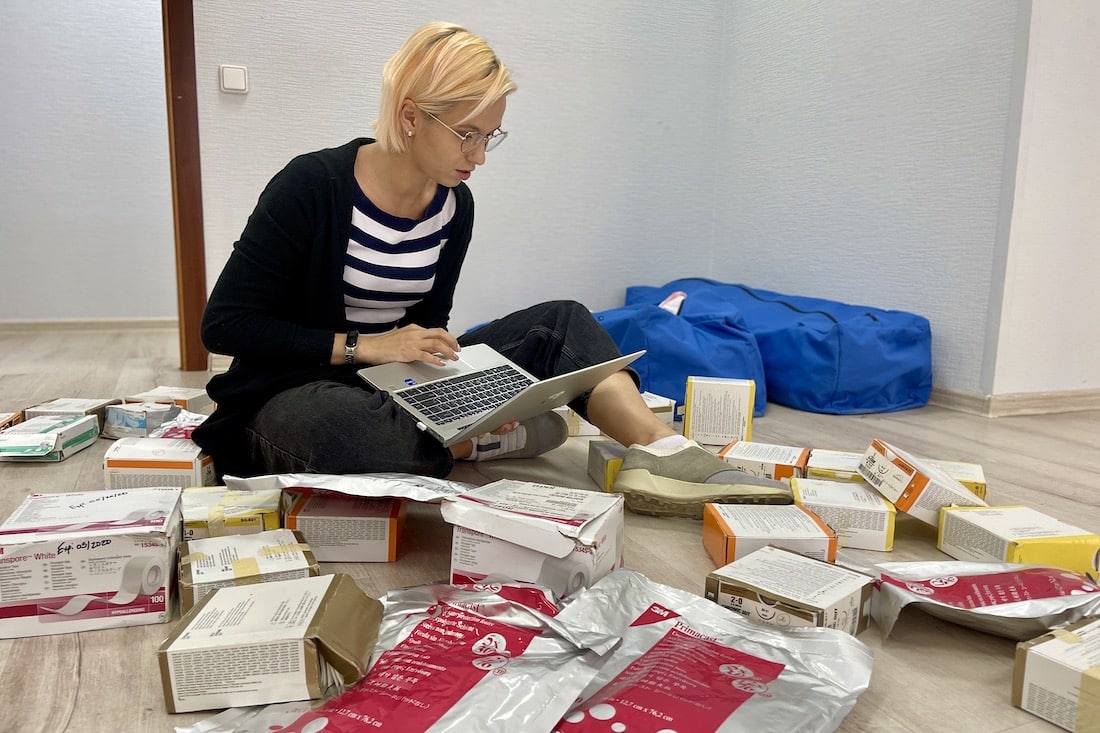
4 p.m. I just remembered that we have a very important meeting now. I rush to put on some blush and lip gloss, pretending I wasn’t crawling all over the floor just a second ago.
It is almost the end of the working day, but not the end of the tasks, as there are 20 more emails left. I’m trying to get something to eat and drinking a third cup of coffee, then doing some paperwork like activity planning, donation letters, and reports.
6 p.m. Well, now it’s time to leave the office—not always on time, but my supervisor forbids me from spending nights in the office working. I planned a visit to the psychotherapist; she says I need some time to rest. I agree, however, the night shift in the hospital is waiting for me. It is not office work, right? I keep going!
(I joke, but please take some time to relax and take care of your mental health. It’s an important part of keeping healthy!)
Vira
Program Officer
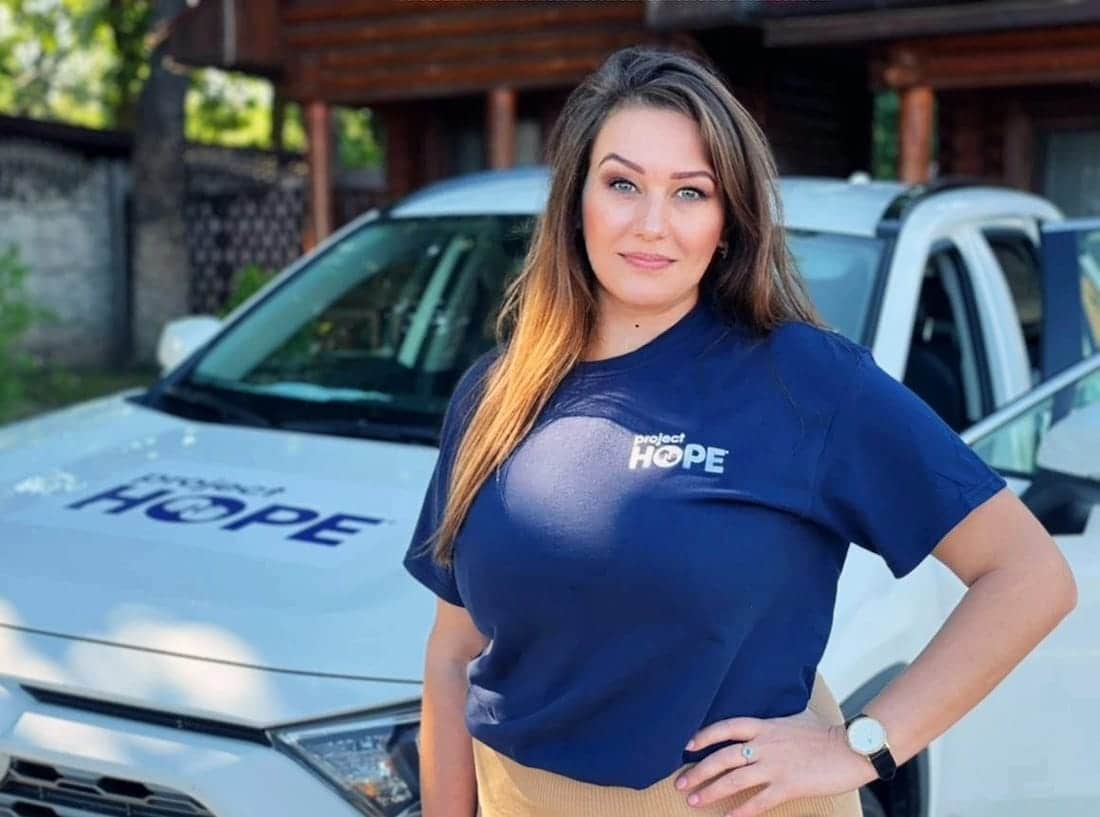
My name is Vira and I am Project HOPE’s program officer based in Kyiv. I am responsible for providing humanitarian assistance to health care facilities and IDP centers in Kyiv, Chernihiv, and Lviv Oblasts.
My home city is Irpin and it was under occupation for two months. And as soon as it was de-occupied, my family and I returned back home. I tried to help people there as much as I could because they were really in great need without any means of survival. At that time, I stumbled upon the vacancy with Project HOPE and decided to join Project HOPE for the emergency response program in Ukraine. I had experience in program management and working with communities and beneficiaries.
The thing I love most about my work is communicating with people in the field, just listening to them and understanding their needs. You just do your best to provide them with humanitarian aid. But very often people want you just to sit next to them and just to listen to their war time stories and it gets so hard to see their tears. I feel like this is the most challenging part of my job.
My working day is full of activities and sometimes in the evening I feel like a squeezed lemon, but I love what I’m doing. Here’s an example:
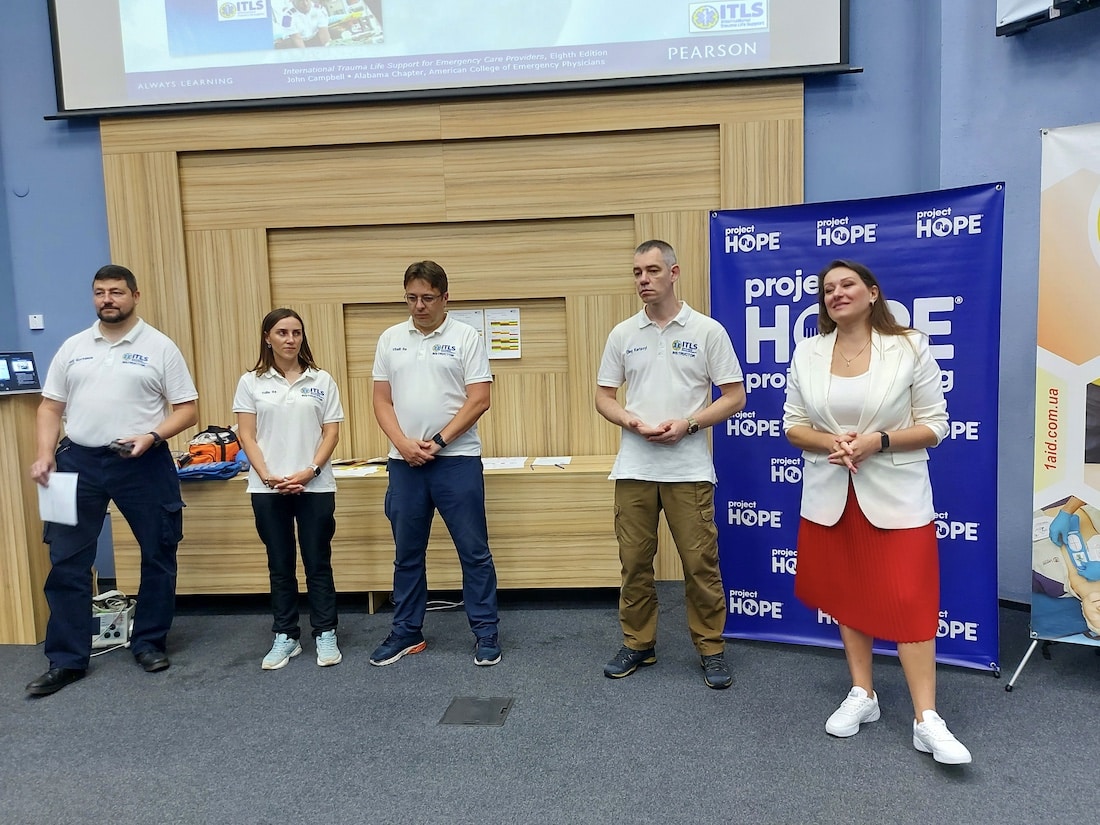
9 a.m. I am going to represent and open up on behalf of Project HOPE a training for doctors and nurses in a health care facility in Lviv. As part of our response, Project HOPE is providing health care staff with both official standardized and customized trainings to build a strong community to improve their skills.
10 a.m. We visit three hospitals in a community to provide official notice of facilities program selection. After conducting an initial needs assessment, Project HOPE is going to collaborate with 24 health care facilities in Ukraine under USAID’s Bureau of Humanitarian Assistance.
1 p.m. I have a meeting with the deputy city mayor, who is also a coordinator of humanitarian aid in the community. I am presenting Project HOPE and its Ukraine response and discussing the needs of the community that hosted more than 10,000 internally displaced people.
2 p.m. We visit the IDP humanitarian headquarters. We are currently conducting a needs assessment of IDP concentration locations for providing humanitarian assistance to IDPs. The chief of the humanitarian headquarters familiarizes me with its work. I see a line of IDPs who are there to receive humanitarian food kits, so I have some short talks with them to find out directly from them what their needs are.
4 p.m. We end the day with a coordination call of the North Health Cluster to share urgent relief activities provided by humanitarian organizations in the north part of Ukraine and discuss security and humanitarian issues/challenges with partners.
Artem
Information Officer
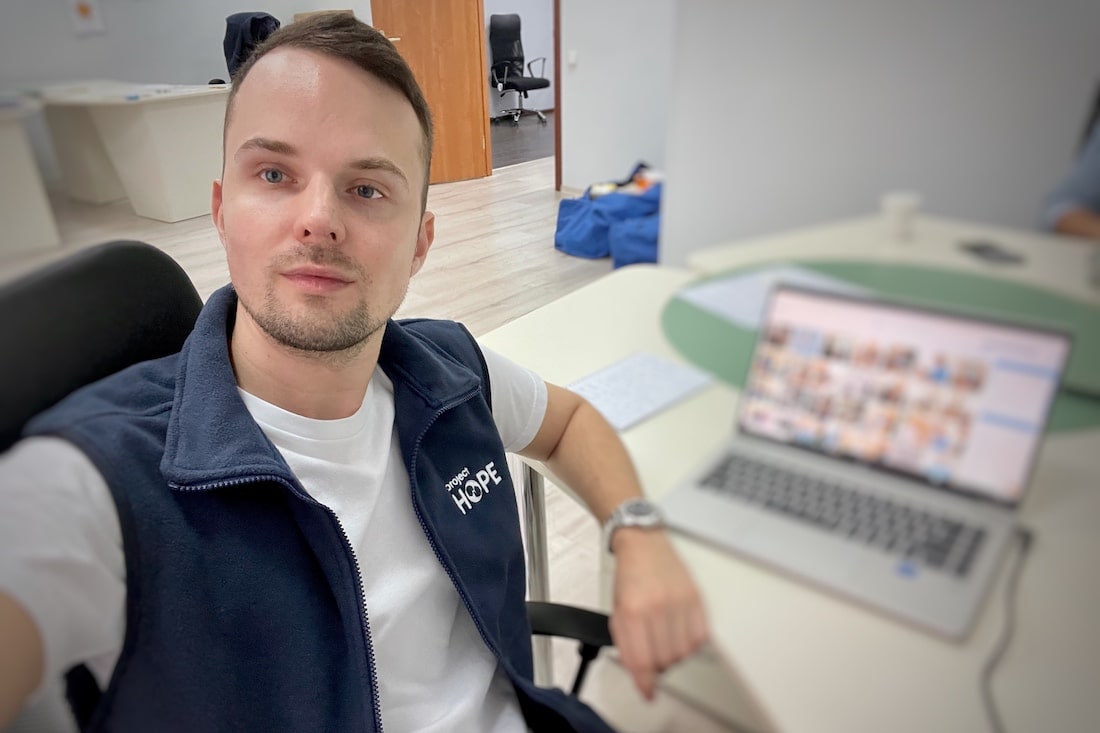
My name is Artem, and I was born and raised in Kyiv. I am an information officer at Project HOPE Ukraine. Before the Russian invasion, I was working as a translator and also pursuing a career in the music industry as a singer and composer. Obviously, on Feb 24, the lives of all Ukrainians were turned upside down.
I joined Project HOPE in May as a translator. Soon I proved myself in other areas, took up more responsibilities, and slowly shifted to the Comms and Information department. What I love about my job is that I am a part of an amazing team that is doing something meaningful for the country I grew up in. My typical day looks like this:
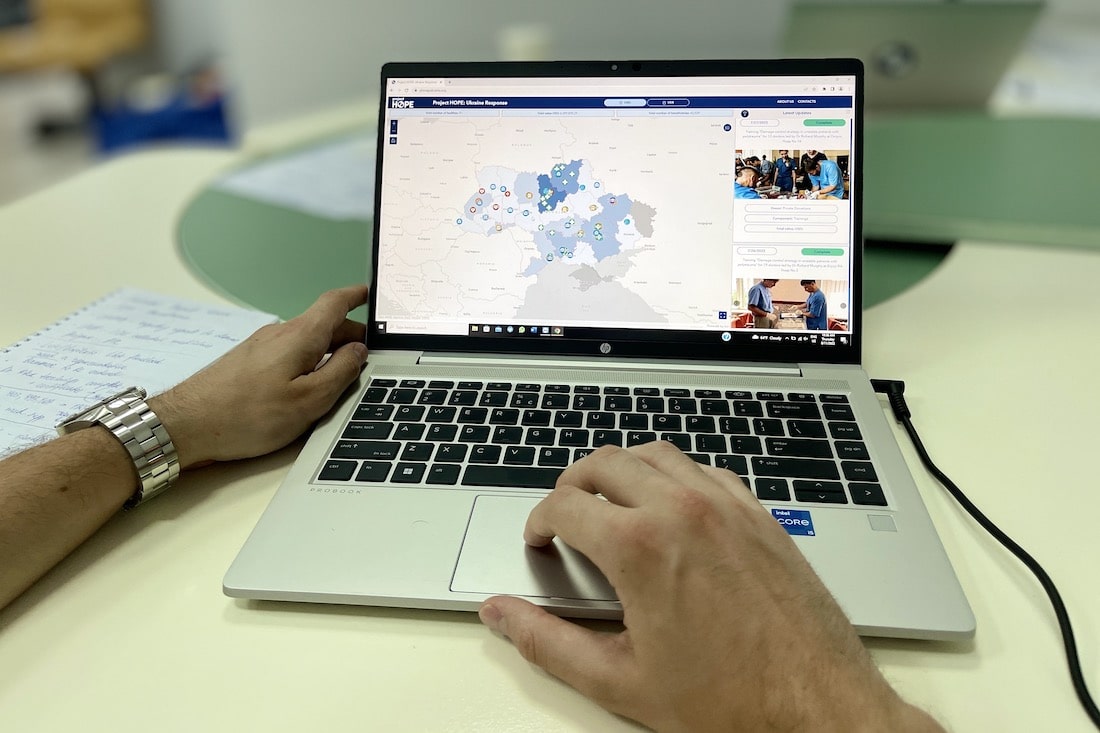
9 a.m. My first job of the day is to fill in the latest updates on the dataset and interactive map. Part of my job is keeping track of all the activities Project HOPE is doing in Ukraine (this includes pharma/medical supply, trainings, MMUs, and others). So whenever I get updates from my colleagues from the four offices, I put them into the table and also on the map we created.
11 a.m. Next, I have to prepare a presentation for the World Health Organization. Making presentations and reports for our partners and regional/HQ offices is something I do regularly. Today I am preparing one for the Health Cluster Meeting to share information on the operation of the three mobile medical units that Project HOPE established in Ukraine to help address local needs.
1 p.m. Developing visibility items. Project HOPE’s team is regularly conducting trainings for health care workers. So my job is to make sure the organization is well presented visually, too. For this purpose, I am preparing branded notebooks, pens, and banners. Later I’ll have a call with the photographer who will take the pics of the training.
2 p.m. Interview for the donor report and success story. Project HOPE has donated oncology medicines to the Oncology Institute in Kharkiv so I am interviewing the medical director of the facility to ask her how these medicines helped them and how they are coping considering the daily shelling of the city and constant danger. She shared a very emotional story and how they are literally risking their lives and never know if they will come back home from work.
4 p.m. We end the day with a coordination call with the regional office. Part of my responsibilities are to coordinate with the regional office to ensure the Ukraine Response Team provides the necessary performance indicators required.
Julia
Program Officer
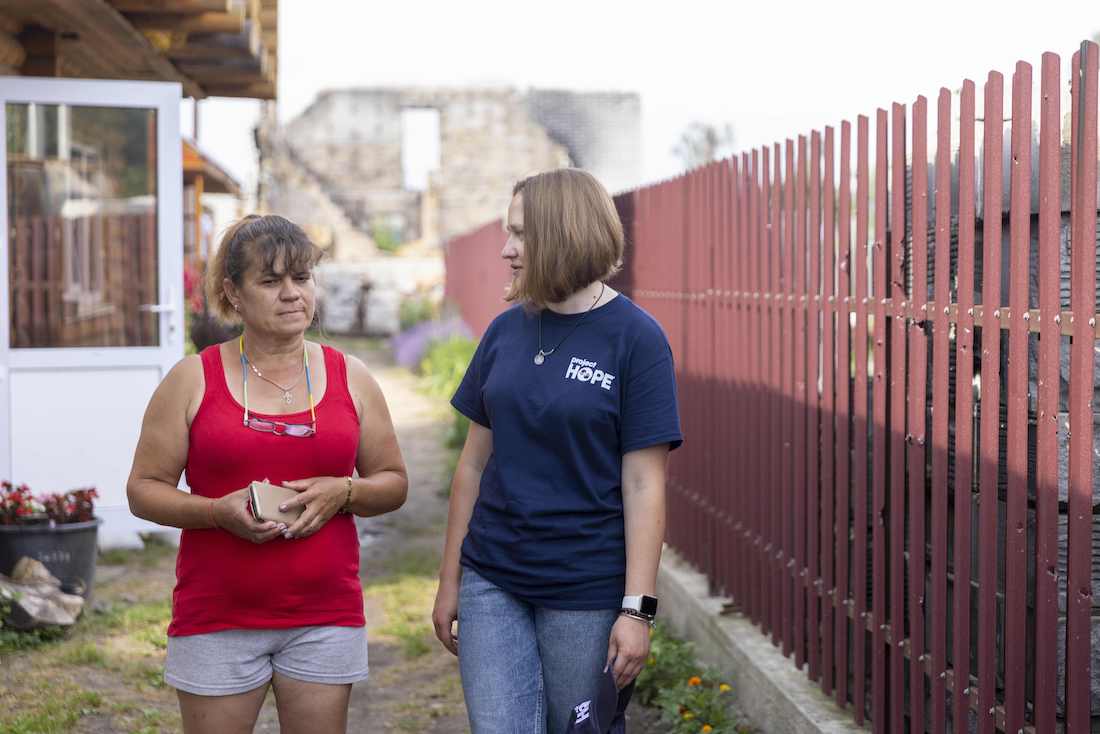
My name is Julia and I am from Ukraine’s Borodianka region. When the Russian invasion started, I had two options: either leave Ukraine and be safe or stay here and help my country. It was scary, but I didn’t doubt even for a moment. So on April 1, once the Russian forces left the north region, my family and I became volunteers in the Borodianka local government. We faced a lack of staff and resources and had a great amount of affected citizens with tragic stories.
At that point, I met Project HOPE’s representatives, whose aim was to provide humanitarian response in medical and social recovery. I was so excited to meet my co-thinkers. They impressed me because their words always became acts. Soon, Project HOPE offered me a consultant position. I was not ready to stop volunteering in the local government because I knew how they needed my help, so the thing I really loved was the opportunity to work with Project HOPE and continue to help in Borodianka.
After some time, more governmental officers who had to leave Borodianka came back to work and I realized that I would contribute to the recovery better being part of Project HOPE full-time. Thus, now I am a Project HOPE program officer for renovations.
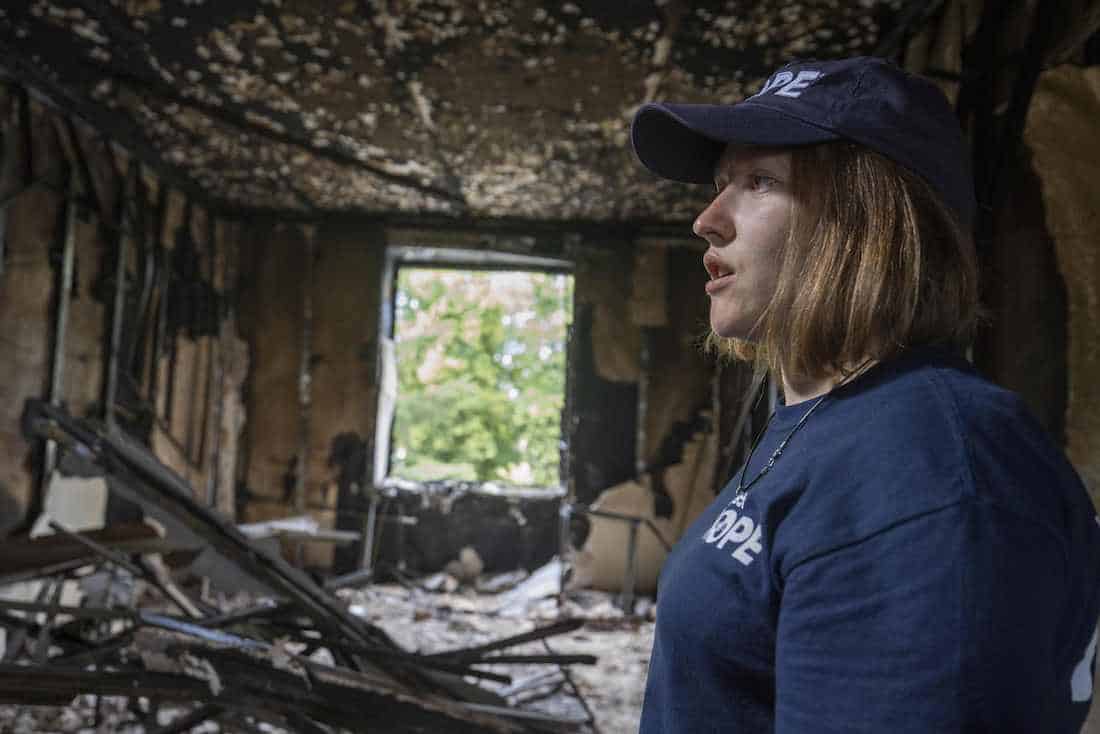
9 a.m. In the morning I meet our engineer, Oleksii, in the office. The first thing we do is get final confirmation from our security manager about the situation in the area we are going to visit, ensuring that the trip will be safe. After having a cup of coffee, we go to the facilities where the beneficiary is waiting for us.
11 a.m. We reach the facility where we do a technical walk around the building and discuss what has already been done by local efforts, what is left to do, and what the urgent needs are. At these meetings, people want to know for sure that we will be able to help. And I think this is the most challenging part of my work—you come to the affected facilities, talk with staff and citizens, listen to their stories, but you cannot promise anything, because first we need to do assessments in order to understand where the help is needed most. It’s impossible to help everyone simultaneously. It is tough, but at the same time it encourages you to do more.
1 p.m. On our way back to the office, we discuss the things we have just witnessed, and after a short stop for lunch we continue to move. Traveling takes a lot of time because of infrastructure damages and document checks.
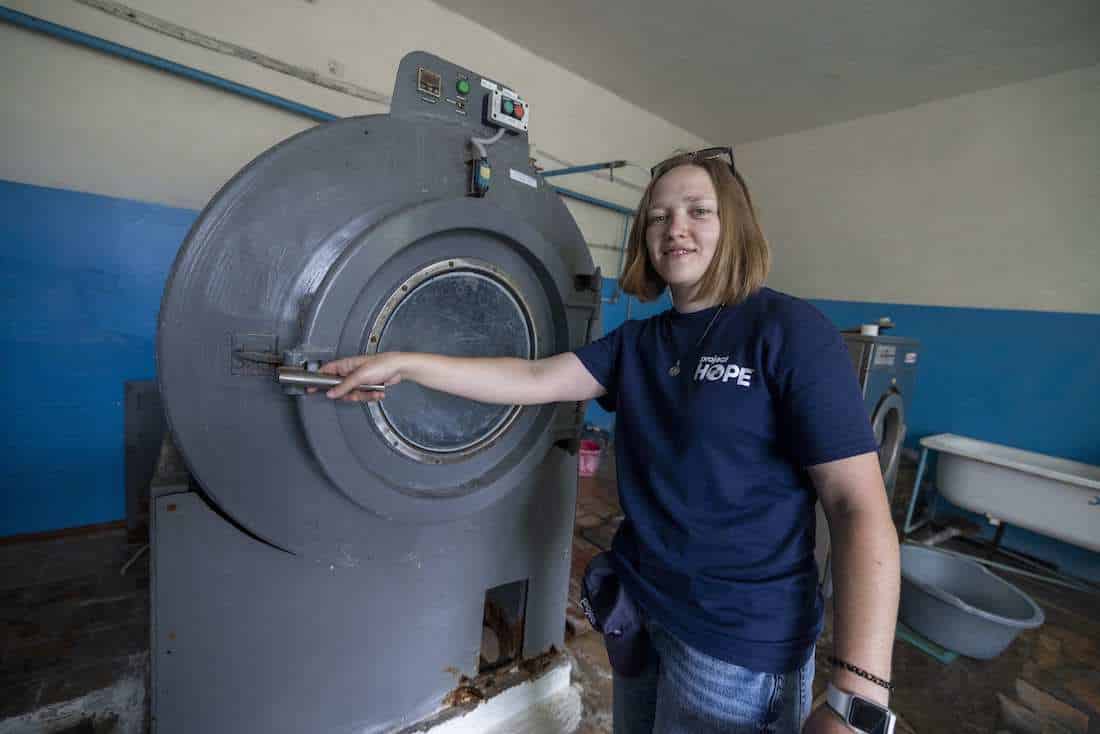
3 p.m. Reaching the office, we systematize the information we got, revealing the missing points and preparing a preliminary report.
5 p.m. Supervisor’s call. We give updates and share the report results, exchange opinions, and do analysis if we can help by ourselves; otherwise, we are trying to find donors. The crucial task for us is to provide a quick response to the humanitarian crisis for vulnerable categories to get help as soon as possible and we do our best in this direction—willing to help people right now.
6 p.m. After a long day we are going back home with the HOPE to do more tomorrow.


